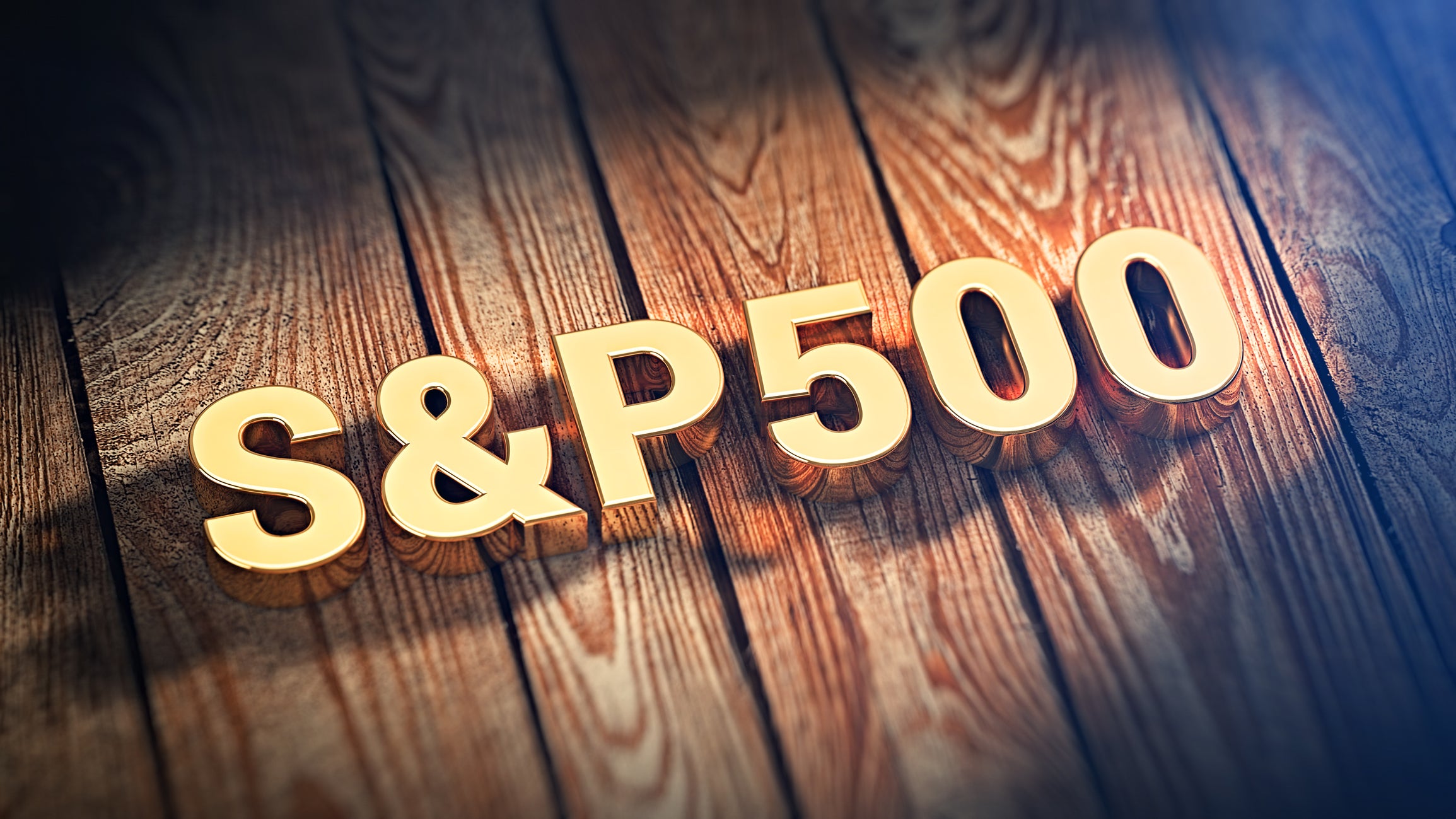Economy
How are USA 500 Stocks Selected?

While USA 500 may include only a small section of publicly traded firms, there is no doubt that it is one of the most important indices in the United States stock market.
Approximately 500 companies in the S&P 500 make over 80% of the stock’s total value on the market. Therefore, it is an important indicator of how the local market is performing.
If you target trading USA 500 stocks, one of the main questions that you might have in your mind is, “How are the companies selected to join the exclusive list?” Everything comes down to meeting a number of rules set by the committee of investors, and we are going to look at some of them:
Market Capitalization
USA 500 was created to represent the largest companies in the US. So, size is an important parameter. The notion of “size” in the stock market means the selected company’s stock value or the total value of its shares (market capitalization).
Take the example of Apple Inc., an American multinational technology firm headquartered in Cupertino, California. In 2018, Apple made history as the first US firm to reach one trillion dollars in market capitalization, but Amazon’s and Microsoft’s also crossed the one trillion-mark by the end of the first quarter of 2019. By the close of September 2020, Apple’s shares were trading at about $115.
Another example is Coca Cola. The company has over 4.3 billion shares, which were trading at $41.9 by early October, meaning that its total market capitalization is about $180.1 billion.
The minimum market capitalization can move up or down, but the current number is $8.1 billion. Of course, this figure was way lower about 10 years ago, and you can expect it to continue increasing in the future.
Profitability
When investors look for stocks, they put a lot of emphasis on profitability. This is why USA 500 and USA 30 indices give a lot of weight to the selected firm’s profitability.
To gauge the profitability of a company, there are two methods that are used; checking the profitability of the firm over the last one year (four quarters) and in the most recent quarter.
However, how profitability plays is very dynamic. In theory, if a company loses $200 million in the first three quarters of a year and then makes a profit of $700 million in the third quarter, it would still be considered profitable.
When considering profitability, companies that have just gone public are required to show their trading history for the past 12 months. This means that if you have just concluded an IPO, it is impossible to immediately hop into the USA 500 Index, even with a high market capitalization.
A Company’s Liquidity and Float should be Easy to Check
The goal of USA 500 is to correctly track the companies with large capitalization that you can invest in. In addition to large capitalization, firms that are only owned by a few individuals (closely held) or those with little trading volume (thinly traded) are disqualified. So, here is how this rule is applied.
To get your company into the S&P 500, your business is required to have more than 50% of its stocks being traded on the stock exchanges. This is a correct assertion because a company with 60% of the shares owned by the founder is more private than another firm where owners only hold 40%.
Besides a firm being publicly owned, it also needs to be liquid to join the S&P 500 index. To achieve this, the company is required to have a trading volume of more than 100% and to have traded no less than 250,000 shares in the previous six months. This implies that if a company has two billion shares, all of them must be traded every year.
Most of the top-rated companies in the US meet these requirements with ease, and it is the reason why they are always on the list or get their way back after falling off.
Companies that Get Free Pass into the USA 500
From the requirements that we have listed above, it is clear that they are pretty stringent, but there are some companies that get a free pass. These are the stocks that are part of other top-rated indices, such as the S&P MidCap 400 and S&P SmallCap 600. These stocks are exempted from the rules of float, profitability, and liquidity.
The argument for exempting these stocks is that if your company is already part of the exempted indices, it will have met most of the requirements for listing on S&P 500. Therefore, if you have a company and want to get your way into the S&P 500, one of the methods is joining the exempted indices.
Some Companies Cannot Get into the USA 500
Notably, S&P 500 only considers standard incorporations and REITs (real estate investment trusts), so other forms of companies falling outside the two categories are excluded. For example, companies with exotic structures, such as master limited partnerships (MLPs) and business development companies (BDCs) are excluded. Limited liability companies, exchange-traded funds (ETFs), and closed-end funds (CEFs) are also excluded.
S&P Goes beyond the Rules!
Notably, meeting the basic rules to join S&P 500 is not enough to join the index! The index committee must also give the nod for your company to join as a way of filtering firms that might want to take advantage of the index.
The active involvement of the index committee makes S&P 500 more active compared to others. For instance, Russel 100 only requires a company to meet the rules without subjecting it to an active committee.
When the USA 500 index committee strategically adds or removes stocks, it helps to ensure that the index does not differ significantly from what is happening on the market.
To get a company to get listed on the index, therefore, it must be performing well and maintain an upward trend on the market to impress the committee.
In this post, we have looked at the stringent rules that companies need to meet to get listed on the USA 500 Index. So, if you are a new trader, USA 500 companies can be a good consideration.
Economy
Again, OPEC Cuts 2024, 2025 Oil Demand Forecasts

By Adedapo Adesanya
The Organisation of the Petroleum Exporting Countries (OPEC) has once again trimmed its 2024 and 2025 oil demand growth forecasts.
The bloc made this in its latest monthly oil market report for December 2024.
The 2024 world oil demand growth forecast is now put at 1.61 million barrels per day from the previous 1.82 million barrels per day.
For 2025, OPEC says the world oil demand growth forecast is now at 1.45 million barrels per day, which is 900,000 barrels per day lower than the 1.54 million barrels per day earlier quoted.
On the changes, the group said that the downgrade for this year owes to more bearish data received in the third quarter of 2024 while the projections for next year relate to the potential impact that will arise from US tariffs.
The oil cartel had kept the 2024 outlook unchanged until August, a view it had first taken in July 2023.
OPEC and its wider group of allies known as OPEC+ earlier this month delayed its plan to start raising output until April 2025 against a backdrop of falling prices.
Eight OPEC+ member countries – Saudi Arabia, Russia, Iraq, United Arab Emirates, Kuwait, Kazakhstan, Algeria, and Oman – decided to extend additional crude oil production cuts adopted in April 2023 and November 2023, due to weak demand and booming production outside the group.
In April 2023, these OPEC+ countries decided to reduce their oil production by over 1.65 million barrels per day as of May 2023 until the end of 2023. These production cuts were later extended to the end of 2024 and will now be extended until the end of December 2026.
In addition, in November 2023, these producers had agreed to voluntary output cuts totalling about 2.2 million barrels per day for the first quarter of 2024, in order to support prices and stabilise the market.
These additional production cuts were extended to the end of 2024 and will now be extended to the end of March 2025; they will then be gradually phased out on a monthly basis until the end of September 2026.
Members have made a series of deep output cuts since late 2022.
They are currently cutting output by a total of 5.86 million barrels per day, or about 5.7 per cent of global demand. Russia also announced plans to reduce its production by an extra 471,000 barrels per day in June 2024.
Economy
Aradel Holdings Acquires Equity Stake in Chappal Energies

By Aduragbemi Omiyale
A minority equity stake in Chappal Energies Mauritius Limited has been acquired by a Nigerian energy firm, Aradel Holdings Plc.
This deal came a few days after Chappal Energies purchased a 53.85 per cent equity stake in Equinor Nigeria Energy Company Limited (ENEC).
Chappal Energies went into the deal with Equinor to take part in the oil and gas lease OML 128, including the unitised 20.21 per cent stake in the Agbami oil field, operated by Chevron.
Since production started in 2008, the Agbami field has produced more than one billion barrels of oil, creating value for Nigerian society and various stakeholders.
As part of the deal, Chappal will assume the operatorship of OML 129, which includes several significant prospects and undeveloped discoveries (Nnwa, Bilah and Sehki).
The Nnwa discovery is part of the giant Nnwa-Doro field, a major gas resource with significant potential to deliver value for Nigeria.
In a separate transaction, on July 17, 2024, Chappal and Total Energies sealed an SPA for the acquisition by Chappal of 10 per cent of the SPDC JV.
The relevant parties to this transaction are working towards closing out this transaction and Ministerial Approval and NNPC consent to accede to the Joint Operating Agreement have been obtained.
“This acquisition is in line with diversifying our asset base, deepening our gas competencies and gaining access to offshore basins using low-risk approaches.
“We recognise the strategic role of gas in Nigeria’s energy future and are happy to expand our equity holding in this critical resource.
“We are committed to the cause of developing the significant value inherent in the assets, which will be extremely beneficial to the country.
“Aradel hopes to bring its proven execution competencies to bear in supporting Chappal’s development of these opportunities,” the chief executive of Aradel Holdings, Mr Adegbite Falade, stated.
Economy
Afriland Properties Lifts NASD OTC Securities Exchange by 0.04%

By Adedapo Adesanya
Afriland Properties Plc helped the NASD Over-the-Counter (OTC) Securities Exchange record a 0.04 per cent gain on Tuesday, December 10 as the share price of the property investment rose by 34 Kobo to N16.94 per unit from the preceding day’s N16.60 per unit.
As a result of this, the market capitalisation of the bourse went up by N380 million to remain relatively unchanged at N1.056 trillion like the previous trading day.
But the NASD Unlisted Security Index (NSI) closed higher at 3,014.36 points after it recorded an addition of 1.09 points to Monday’s closing value of 3,013.27 points.
The NASD OTC securities exchange recorded a price loser and it was Geo-Fluids Plc, which went down by 2 Kobo to close at N3.93 per share, in contrast to the preceding day’s N3.95 per share.
During the trading session, the volume of securities bought and sold by investors increased by 95.8 per cent to 2.4 million units from the 1.2 million securities traded in the preceding session.
However, the value of shares traded yesterday slumped by 3.7 per cent to N4.9 million from the N5.07 million recorded a day earlier, as the number of deals surged by 27.3 per cent to 14 deals from 11 deals.
Geo-Fluids Plc remained the most active stock by volume (year-to-date) with 1.7 billion units sold for N3.9 billion, trailed by Okitipupa Plc with 752.2 million units valued at N7.8 billion, and Afriland Properties Plc with 297.5 million units worth N5.3 million.
Also, Aradel Holdings Plc remained the most active stock by value (year-to-date) with 108.7 million units worth N89.2 billion, followed by Okitipupa Plc with 752.2 million units valued at N7.8 billion, and Afriland Properties Plc with 297.5 million units sold for N5.3 billion.
-

 Feature/OPED5 years ago
Feature/OPED5 years agoDavos was Different this year
-
Travel/Tourism8 years ago
Lagos Seals Western Lodge Hotel In Ikorodu
-

 Showbiz2 years ago
Showbiz2 years agoEstranged Lover Releases Videos of Empress Njamah Bathing
-

 Banking6 years ago
Banking6 years agoSort Codes of GTBank Branches in Nigeria
-

 Economy2 years ago
Economy2 years agoSubsidy Removal: CNG at N130 Per Litre Cheaper Than Petrol—IPMAN
-

 Banking2 years ago
Banking2 years agoFirst Bank Announces Planned Downtime
-

 Sports2 years ago
Sports2 years agoHighest Paid Nigerian Footballer – How Much Do Nigerian Footballers Earn
-

 Technology4 years ago
Technology4 years agoHow To Link Your MTN, Airtel, Glo, 9mobile Lines to NIN












